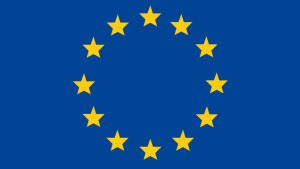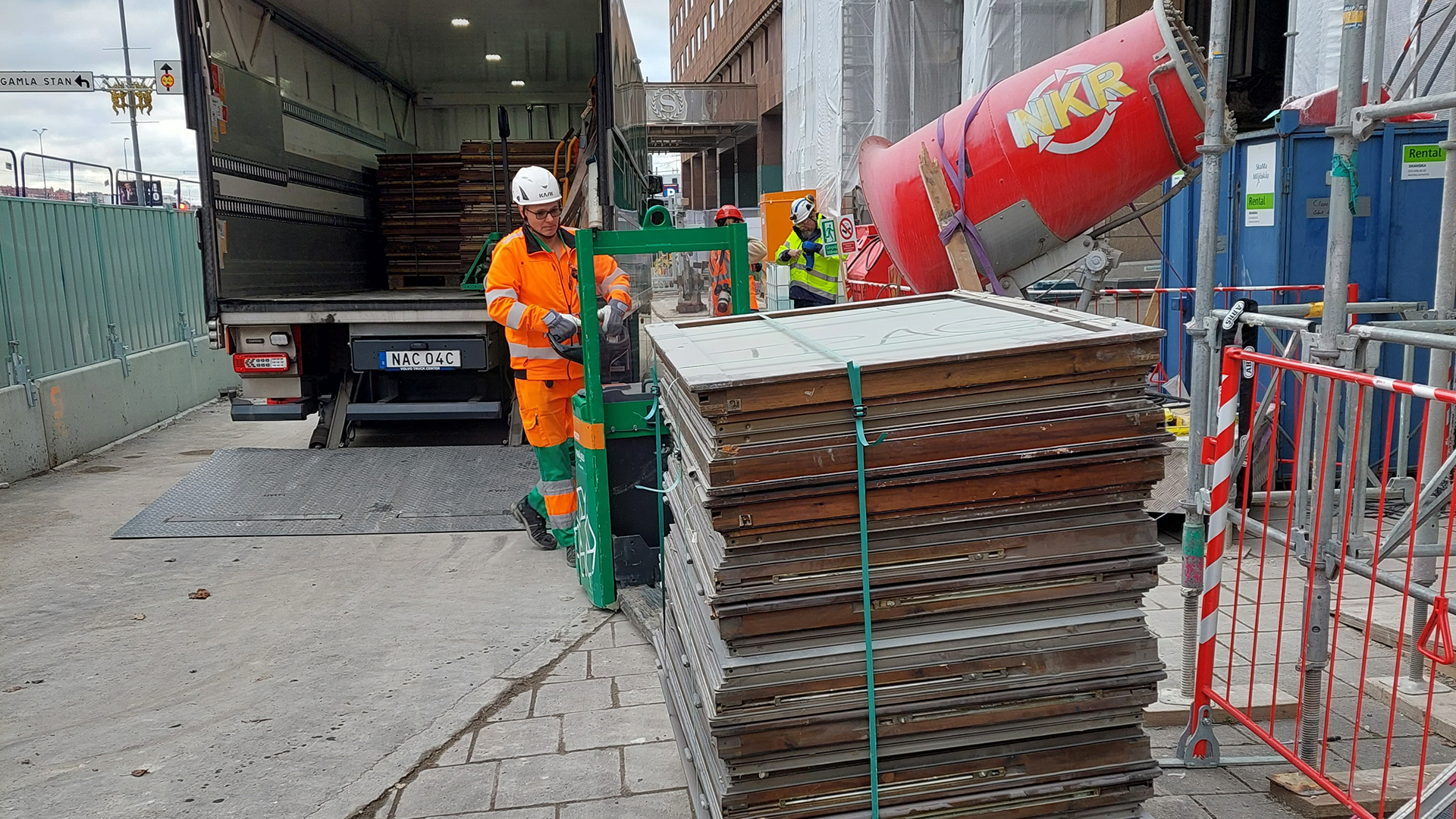Onto-DESIDE addresses methodological and technical challenges related to trust and innovation in the circular economy (CE), focusing on semantic interoperability in data sharing. Project Coordinator Eva Blomqvist discusses the programme, its benefits, and innovations.
Imagine an office building due to be renovated. What products and materials does it contain? Most likely materials and products from various industry sectors, including traditional construction materials and components such as windows, doors, and floor and ceiling tiles, together with interior design elements such as carpets and other textiles, or even furniture, as well as modern technology such as electronic devices for building control and entertainment.
Can these building components be dismounted? Reused? Refurbished? Recycled? To answer such questions, we need information about the elements inside the building, including their material composition, how to dismount them, what industry actors might be able to transport, sort, treat, and whether they can further use or sell them.
However, such information is not commonly available, at least not at the necessary level of granularity and detail e.g., due to confidentiality, limited market demand, complexity, and cost of setting up and maintaining the material inventory, or merely the time scale since the products were manufactured and put into the building.
Even if some information is available, e.g., at the level of manufacturers, it is usually not easily accessed by actors involved in end-of-life scenarios. It is not easily understood nor linkable with other information to form the full picture of the building stock. As a result, a large manual effort is required in gathering, integrating, assuring quality, and analysing the information needed to select relevant circular strategies and to find the necessary value chain actors for setting up a successful circular value network.
Particularly, semantic interoperability of data is acknowledged to be one of the biggest barriers towards data sharing in circular economy. Even if common data formats are used, the meaning of data differs between industry domains, countries, or even individual organisations. Such differences can range from assuming the use of different units of measurement, different scales, or different standards and code lists to more subtle challenges of divergence in the meaning of seemingly similar concepts.
The Onto-DESIDE project provides the technical foundations for circular economy information flows by means of digitalisation and data sharing. The project leverages open standards for semantic data interoperability to establish a shared vocabulary, i.e., a network of ontologies for data documentation, as well as a decentralised digital platform that enables collaboration in a secure and confidentiality-preserving manner. These solutions will allow for the automation of discovery, planning, management, and execution of cross-industry circular value networks at a global scale.
This interdisciplinary project also addresses the use of these technologies in a business context and studies CE as a complex system to develop integrated tools and methods for further enhancing CE. Apart from solutions that need to be technically feasible, the project also explores how such value networks can be designed and developed considering the interplay of the resource, information, energy and value flows, i.e. considering how the value network will behave as a system, where technology infrastructure is only one component.
To ground our approach and gather CE-related data sharing needs across industry domains, the project studies three diverse settings, considering the textile, construction, and electronics and appliances industries. The textile-use case investigates the material and information flows, as well as information needs and barriers, within a scenario focused on recycling textiles from fibre to fibre in the footwear industry, represented by the partner Texon Italia.
Similarly, the construction use case considers the flows related to reuse, refurbishment and recycling of floor tiles manufactured by our partner Lindner Group. The electronics and appliances-use case, involving the REIA organisation and its members, focuses on the flows related to speakers, highlighting rare earth-related components such as magnets. Additionally, our partner Ragn-Sells represents the perspective of a recycler, managing such flows across industry boundaries.
Further, three companies with in-house software products and services are also involved: Circularise, Concular, and Circular.fashion, to capture current data exchange formats, and assess interoperability across sector-specific solutions. Interoperability with the Product Circularity Data Sheet (PCDS), as well as Digital Product Passports (DPP), is ensured by +Impakt. Based on this broad industry representation, we extract needs and requirements, test data, and evaluation scenarios for validating, assessing, and analysing the potential of the technologies and methods developed in the project.
Ontologies, as computing artefacts, encode definitions of concepts and their relations, providing clear semantics to data and clarify what is described by a dataset, avoiding ambiguity and confusion. Ontologies are widely understood as a key technology to address semantic interoperability, to support automation, and can act as the common core for expressing mappings between concepts in different standards, as well as transformation rules for data exchange between different systems and formats.
To make the use of ontologies scalable and flexible, an ontology network is a set of interrelated ontologies that are built using a modular architecture to separate concerns and to allow for ontology use and reuse at the right level of granularity and expressivity.
The project therefore builds a set of core ontology modules for circular economy data documentation and sharing. The network is grounded in a set of basic ontology design patterns aligned to existing and emerging standards (e.g. the emerging ISO/FDIS 59004, including its CE vocabulary).
The ontologies can be viewed as a concrete link between such standards and their technical implementation, as well as extending the standards to cover detailed data attributes, allowing their use with concrete CE-related data. A preliminary version of the ontology network is already published.¹
In addition, the project adapts and extends the Solid family of emerging standard Web protocols for decentralised data sharing. The aim is to use the Web itself as the decentralised data-sharing platform for technically implementing a circular economy by adding an open circularity platform.²
The platform is intended to function as an interchange layer for users and systems to share data annotated using the ontology network. For instance, the extended platform protocols could support the exchange of data between circular economy service providers, value chain actors, as well as manufacturers and suppliers who seek new resources to replace virgin materials.
In addition to the technical level, the CE flows can be mapped and analysed using the Circularity Thinking methodology and tools. These tools are part of a larger framework for viewing CE from a complex systems perspective, called the Multi Flow Metabolism.
In the project, we are operationalising this framework by identifying circularity factors and enablers that need to be put in place for the successful implementation of CE value networks. Complemented with training material on the technological side, this will allow for reuse, exploitation, and extension of the overall framework, supported by the technological infrastructure, even after the project’s lifetime.
With one year left of the project, we are now revising the solutions and expect to make a final release of the complete project framework in the spring of 2025. Currently, ongoing efforts include aligning the ontology network to existing CE and materials ontologies (e.g. EMMO), as well as to the CE standards being released.
 This project has received funding from the European Union’s Horizon Europe research and innovation programme under grant agreement No. 101058682.
This project has received funding from the European Union’s Horizon Europe research and innovation programme under grant agreement No. 101058682.
References
Please note, this article will also appear in the 18th edition of our quarterly publication.










